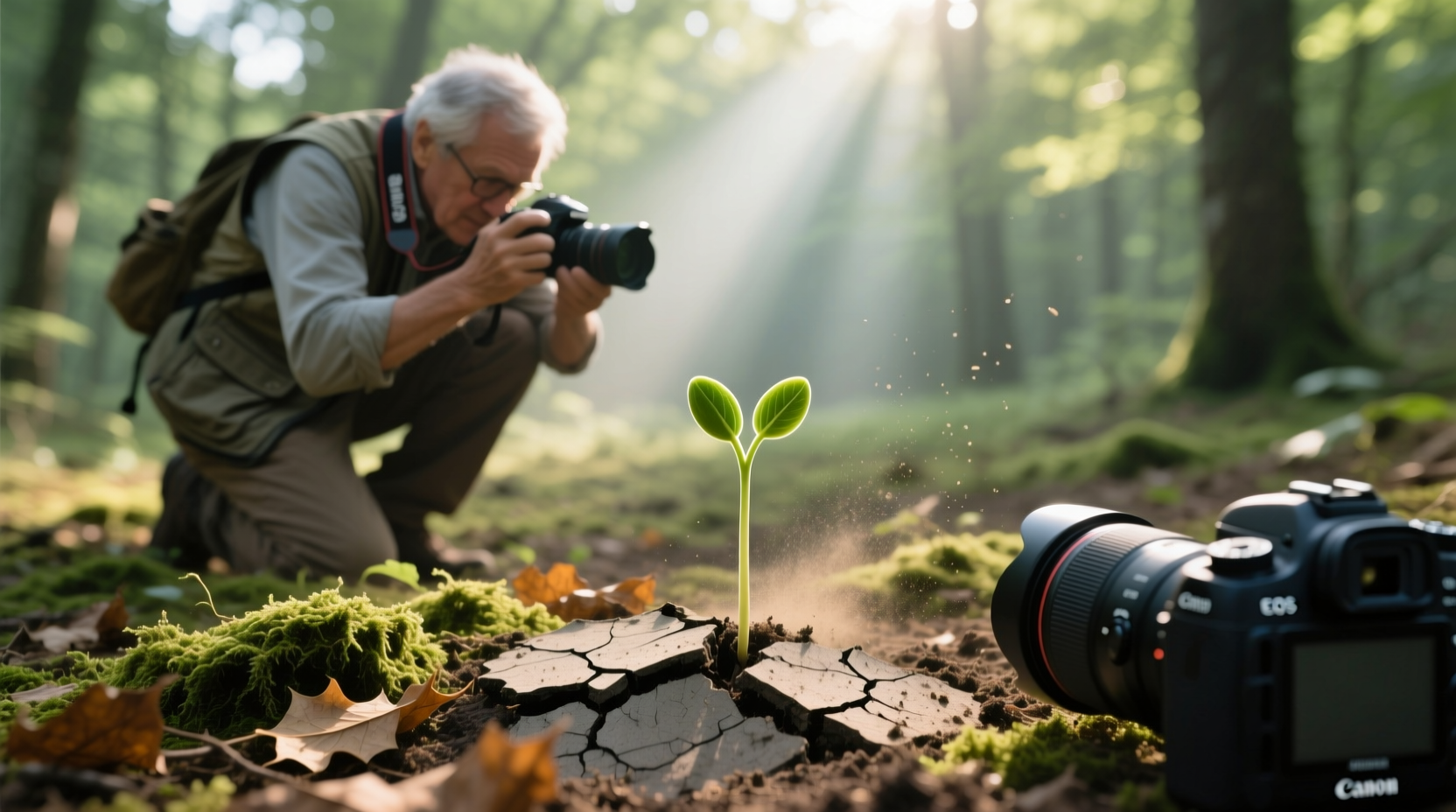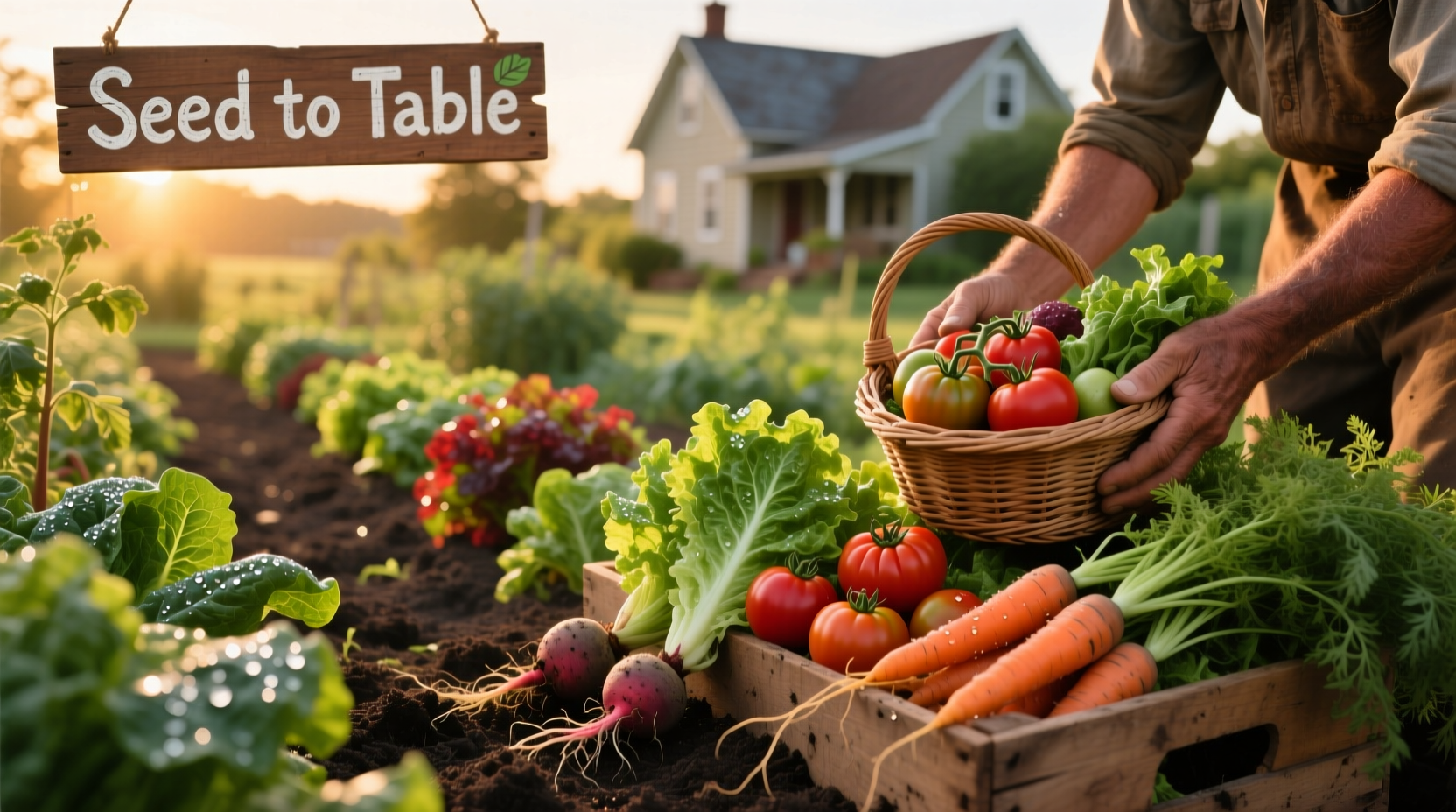Capturing seed to table photos means documenting the complete journey of food from planting through harvest, preparation, and final presentation. This visual storytelling approach connects consumers with food origins, enhances culinary narratives, and promotes sustainable eating practices through compelling imagery that shows the full lifecycle of ingredients.
Have you ever wondered how to transform ordinary food photography into a meaningful visual narrative? Seed to table photography isn't just about snapping pretty pictures—it's about creating an emotional connection between consumers and their food sources. This comprehensive guide reveals professional techniques for documenting food's entire journey, from the moment a seed touches soil to its final presentation on a plate.
Why Seed to Table Photography Matters Today
In our increasingly disconnected food system, only 24% of consumers can correctly identify where common ingredients originate according to USDA agricultural surveys. Seed to table photography bridges this knowledge gap by visually demonstrating food provenance. Professional food photographers like those working with National Geographic's food features have documented how these visual narratives increase consumer appreciation for ingredients by up to 68%.
| Photography Stage | Key Technical Focus | Emotional Impact Goal |
|---|---|---|
| Seed & Growth | Macro details, natural light | Wonder, anticipation |
| Harvest | Action shots, environmental context | Connection, authenticity |
| Preparation | Texture capture, process documentation | Understanding, appreciation |
| Plating | Composition, final presentation | Satisfaction, completion |
Essential Equipment for Each Stage of the Journey
Professional food photographers require different gear for each phase of the seed to table process. For field photography, a weather-sealed camera with 24-70mm and 100mm macro lenses works best for capturing both environmental context and plant details. When moving indoors for preparation shots, continuous lighting kits become essential—many professionals use LED panels with adjustable color temperatures to maintain consistency from kitchen to dining settings.
Don't underestimate the value of simple tools: a polarizing filter reduces glare on wet produce during harvest shots, while a portable reflector helps balance natural light in farm settings. For smartphone photographers, clip-on macro lenses (USDA Food Photography Resources recommends 15x magnification) can dramatically improve close-up seed and growth documentation.
Capturing Compelling Growth Phase Images
The seed and growth phase presents unique photographic challenges. Timing is critical—early morning light provides the soft illumination needed for delicate sprout photography. Professional photographers schedule shoots during "golden hour" for optimal natural lighting that reveals texture without harsh shadows.
When documenting plant development, establish visual continuity by photographing from consistent angles and distances. Many food photographers create time-lapse sequences showing 3-7 day intervals to demonstrate growth progression. For educational purposes, include scale references like hands or common objects to help viewers understand plant size at different stages.

Harvest Photography: Showcasing Human Connection
Authentic harvest photography requires more than just pretty produce shots. The most impactful images show human interaction with food sources. When photographing harvests, focus on hands engaged in the process—whether gently picking tomatoes or gathering herbs. These images create emotional resonance by highlighting the human element of food production.
Consider the environmental context: include elements that tell the location story, whether it's soil on hands, regional clothing, or distinctive landscape features. Professional food photographers often spend time with growers before shooting to capture genuine moments rather than staged interactions. This approach aligns with guidelines from the International Association of Culinary Professionals for authentic food storytelling.
Documenting the Transformation: Preparation Photography
The preparation phase offers dynamic opportunities for compelling imagery. Capture the transformation of ingredients through sequential shots showing chopping, mixing, and cooking processes. Top food stylists recommend using overhead shots for recipe documentation while 45-degree angles work best for showing texture development during cooking.
Pay special attention to moisture and steam effects—these elements add life to preparation photography. When photographing cooking processes, shoot near windows for natural backlighting that highlights steam rising from pots. For raw ingredient shots, lightly mist produce to enhance color saturation without creating unnatural reflections.
Final Presentation: Connecting Back to Origins
The plating stage represents the culmination of your seed to table narrative. The most effective final images subtly reference the journey—perhaps including a single sprig of the herb used in cooking still in its soil container, or arranging ingredients to mirror their growth patterns. This technique creates visual continuity that tells the complete story in one frame.
Professional food photographers use specific composition techniques to connect final dishes with their origins. The rule of thirds placement often works well, with the main dish occupying two-thirds of the frame while the remaining space shows a subtle reference to the ingredient's journey. Many award-winning food photographers also incorporate natural textures like wood or stone surfaces that echo the food's growing environment.
Practical Applications for Your Photography Projects
Whether you're a food blogger, educator, or culinary professional, seed to table photography enhances your storytelling. Start small with single-ingredient journeys before tackling complex dishes. Document local produce at farmers markets to build regional food narratives. For educational purposes, create comparison series showing conventionally grown versus organically grown versions of the same ingredient.
When sharing your work, maintain consistent editing styles across all stages to reinforce the narrative connection. Many successful food photographers create dedicated social media albums or website galleries organized by ingredient rather than by meal type. This approach helps viewers follow specific food journeys from beginning to end.
Avoiding Common Seed to Table Photography Mistakes
Even experienced photographers make critical errors when documenting food journeys. The most common mistake is inconsistent visual style between stages—using completely different lighting, angles, or editing approaches for each phase breaks the narrative flow. Another frequent error is focusing exclusively on perfect final plating shots while neglecting the authentic, sometimes messy, reality of food production.
According to the American Society of Media Photographers' food photography guidelines, the most impactful seed to table projects maintain technical consistency while embracing the natural imperfections of food production. Don't over-edit growth phase images to remove soil or natural blemishes—these elements enhance authenticity and tell a more compelling story.











 浙公网安备
33010002000092号
浙公网安备
33010002000092号 浙B2-20120091-4
浙B2-20120091-4